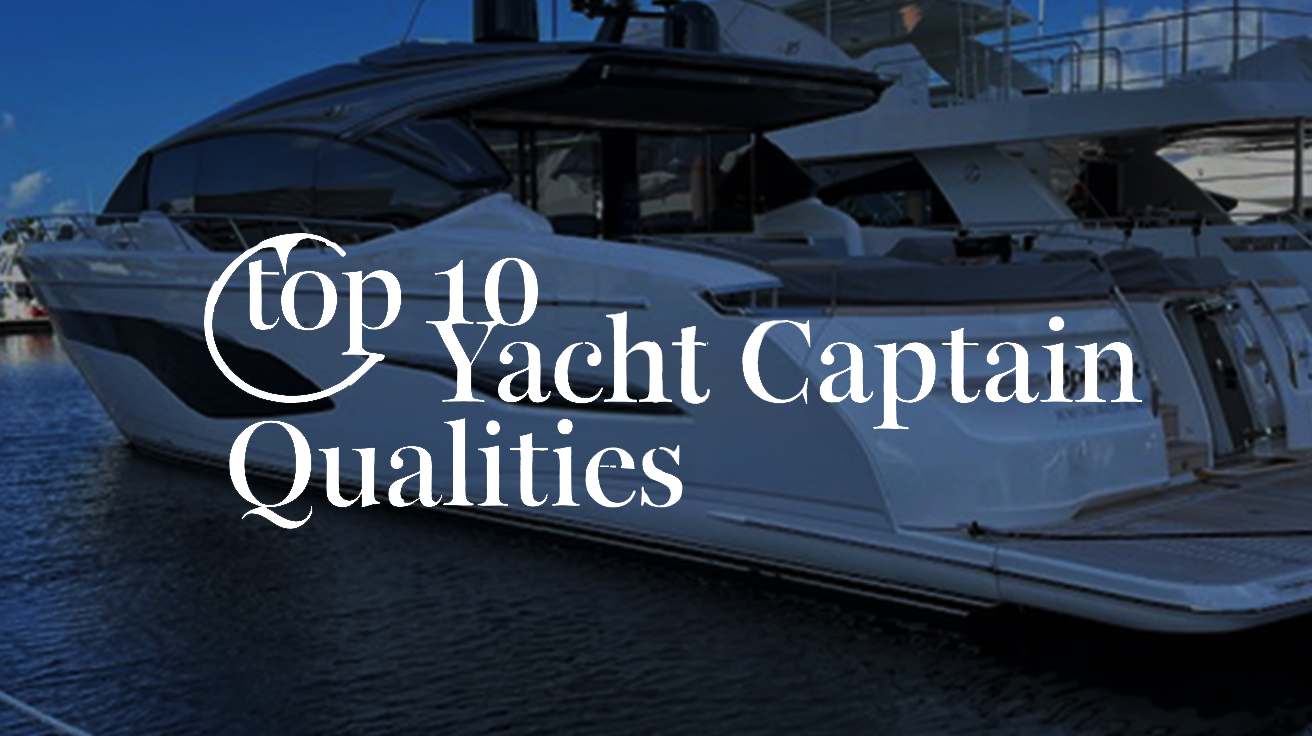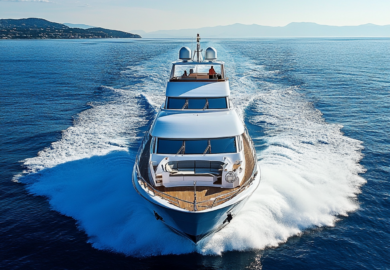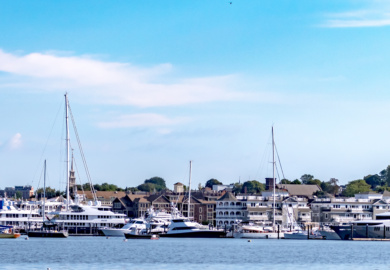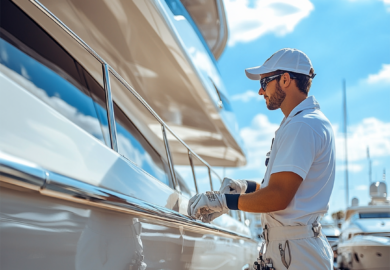Are you dreaming of that perfect yacht delivery, but unsure how to find the right captain for the job? 🚢 Look no further! Choosing the ideal yacht delivery captain can make or break your maritime experience, and we’re here to help you navigate these tricky waters.
Picture this: You’ve invested in a beautiful yacht, and now it’s time to transport it to your dream destination. But who can you trust with this precious cargo? The answer lies in understanding the essential qualities that separate an exceptional yacht delivery captain from the rest. From seasoned expertise to unexpected skills, we’ve compiled a list of the top 10 qualities you should look for – and number 7 might just surprise you!
Join us as we embark on this journey to uncover the traits that make a yacht delivery captain truly outstanding. We’ll explore everything from their navigational prowess to their ability to whip up a gourmet meal at sea. So, grab your captain’s hat and let’s set sail into the world of yacht delivery excellence!
Experience and Expertise
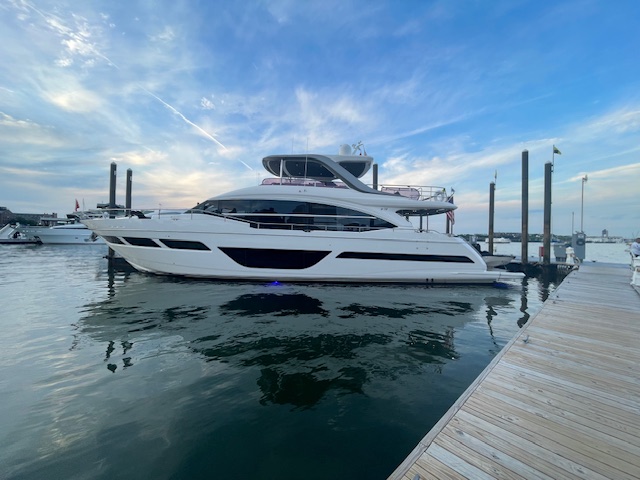
Years of sailing experience
When it comes to hiring a yacht delivery captain, one of the most critical factors to consider is their years of sailing experience. A seasoned captain brings a wealth of knowledge and practical skills that can only be acquired through extensive time on the water. Let’s explore why this aspect is so crucial:
- Navigational Proficiency: With years of experience, a captain develops an innate sense of navigation. They become adept at:
- Reading charts and using navigational instruments
- Understanding currents and tides
- Identifying potential hazards in unfamiliar waters
- Decision-Making Skills: Experienced captains have encountered various situations at sea, which hones their ability to make quick, informed decisions. This is particularly important when:
- Facing unexpected weather changes
- Dealing with mechanical issues
- Managing emergencies
- Crew Management: Long-standing experience often translates to superior leadership skills. Seasoned captains are better equipped to:
- Effectively delegate tasks
- Maintain crew morale during long voyages
- Handle interpersonal conflicts
- Risk Assessment: Years on the water cultivate a captain’s ability to accurately assess and mitigate risks, ensuring the safety of the vessel, crew, and passengers.
When evaluating a yacht delivery captain’s experience, consider the following:
| Experience Level | Years of Sailing | Typical Capabilities |
|---|---|---|
| Novice | 0-2 years | Basic navigation, limited decision-making |
| Intermediate | 3-5 years | Competent navigation, developing leadership skills |
| Experienced | 6-10 years | Advanced navigation, strong decision-making, good leadership |
| Expert | 10+ years | Master navigator, exceptional decision-making, excellent leadership |
Remember, while years of experience are crucial, the quality and diversity of that experience are equally important. A captain with varied experiences across different waters and vessel types may be more valuable than one with many years but limited diversity in their sailing background.
Knowledge of various yacht types
A yacht delivery captain’s expertise should extend beyond general sailing skills to include a comprehensive understanding of different yacht types. This knowledge is essential for several reasons:
- Handling Characteristics: Each yacht type has unique handling characteristics. A captain familiar with various designs can:
- Adapt quickly to the specific vessel they’re delivering
- Optimize the yacht’s performance during the journey
- Ensure smooth maneuvering in different conditions
- Maintenance and Troubleshooting: Different yacht types have distinct systems and components. A knowledgeable captain can:
- Perform routine maintenance specific to the yacht type
- Identify and address potential issues before they escalate
- Troubleshoot problems efficiently if they arise during the delivery
- Safety Considerations: Various yacht types have different safety requirements and considerations. An experienced captain will:
- Be aware of the specific safety equipment needed for each yacht type
- Understand the unique emergency procedures for different vessels
- Implement appropriate safety protocols based on the yacht’s design
- Efficient Operation: Knowledge of various yacht types allows the captain to:
- Optimize fuel consumption
- Utilize the yacht’s features effectively
- Provide a smoother, more comfortable journey for any passengers on board
When assessing a yacht delivery captain’s knowledge of various yacht types, consider their experience with:
- Monohull sailboats
- Catamarans and trimarans
- Motor yachts
- Superyachts
- Classic yachts
- Performance sailing yachts
A captain with a diverse portfolio of yacht types in their experience is likely to be more adaptable and capable of handling any vessel you need to be delivered.
Familiarity with different sea conditions
A yacht delivery captain’s familiarity with various sea conditions is paramount for ensuring safe and efficient voyages. This knowledge comes from extensive experience navigating through diverse marine environments. Here’s why this expertise is crucial:
- Safety: Understanding different sea conditions allows the captain to:
- Anticipate potential hazards
- Take preemptive measures to ensure the safety of the vessel and crew
- Navigate challenging waters with confidence
- Route Planning: Familiarity with sea conditions enables the captain to:
- Choose the optimal route for the delivery
- Avoid areas known for treacherous conditions
- Plan for potential weather-related detours
- Vessel Performance: Knowledge of how a yacht behaves in various conditions helps the captain:
- Adjust sailing or motoring techniques for maximum efficiency
- Minimize wear and tear on the vessel
- Ensure passenger comfort during the journey
- Risk Management: Experience with different sea conditions allows for better risk assessment and mitigation:
- Identifying when to seek shelter
- Deciding when to alter course to avoid adverse conditions
- Knowing when to push forward and when to exercise caution
Key sea conditions a yacht delivery captain should be familiar with include:
- Open ocean swells
- Coastal waters and their unique challenges
- River mouths and estuaries
- Shallow water navigation
- Strong currents and tides
- Storm conditions and heavy weather sailing
A captain’s logbook or sailing resume should ideally show experience in a variety of these conditions across different geographical locations.
Certifications and qualifications
While experience is crucial, formal certifications and qualifications provide additional assurance of a yacht delivery captain’s competence and professionalism. These credentials demonstrate a commitment to ongoing education and adherence to industry standards. Here’s why they matter:
- Legal Compliance: Many jurisdictions require specific certifications for captains operating commercial vessels, including yacht deliveries. Ensuring your captain has the necessary qualifications helps avoid legal issues.
- Insurance Requirements: Some insurance policies may require the captain to hold certain certifications. Hiring a properly qualified captain can ensure your vessel remains covered during the delivery.
- Standardized Knowledge: Certifications often require passing standardized tests, ensuring the captain has a broad base of knowledge covering navigation, safety procedures, and maritime regulations.
- Continued Education: Many certifications require regular renewal, encouraging captains to stay updated with the latest maritime practices and technologies.
- Professional Credibility: Qualifications from recognized institutions add to a captain’s credibility and professional standing in the maritime community.
When evaluating a yacht delivery captain’s certifications and qualifications, look for:
| Certification | Description | Relevance |
|---|---|---|
| USCG Captain’s License | U.S. Coast Guard certification for operating vessels | Essential for deliveries in U.S. waters |
| RYA Yachtmaster | Royal Yachting Association’s highest qualification | Widely recognized international certification |
| STCW Basic Safety Training | Standards of Training, Certification and Watchkeeping | International standard for maritime safety |
| Marine Radio Operator’s Certificate | Certification for operating marine radios | Essential for communication at sea |
| First Aid and CPR | Medical emergency response training | Critical for handling onboard medical situations |
Additional valuable qualifications might include:
- Advanced navigation certifications
- Radar operation certificates
- Survival at sea training
- Specific yacht manufacturer training courses
Remember, while certifications are important, they should complement real-world experience rather than substitute for it. The ideal yacht delivery captain will have a balanced combination of formal qualifications and practical sailing experience.
In conclusion, when evaluating the experience and expertise of a yacht delivery captain, consider the depth and breadth of their sailing experience, their knowledge of various yacht types, familiarity with different sea conditions, and relevant certifications and qualifications. This comprehensive assessment will help ensure you select a captain who can safely and efficiently deliver your yacht to its destination. With these factors in mind, let’s explore another crucial quality in a yacht delivery captain: their navigation skills.
Navigation Skills
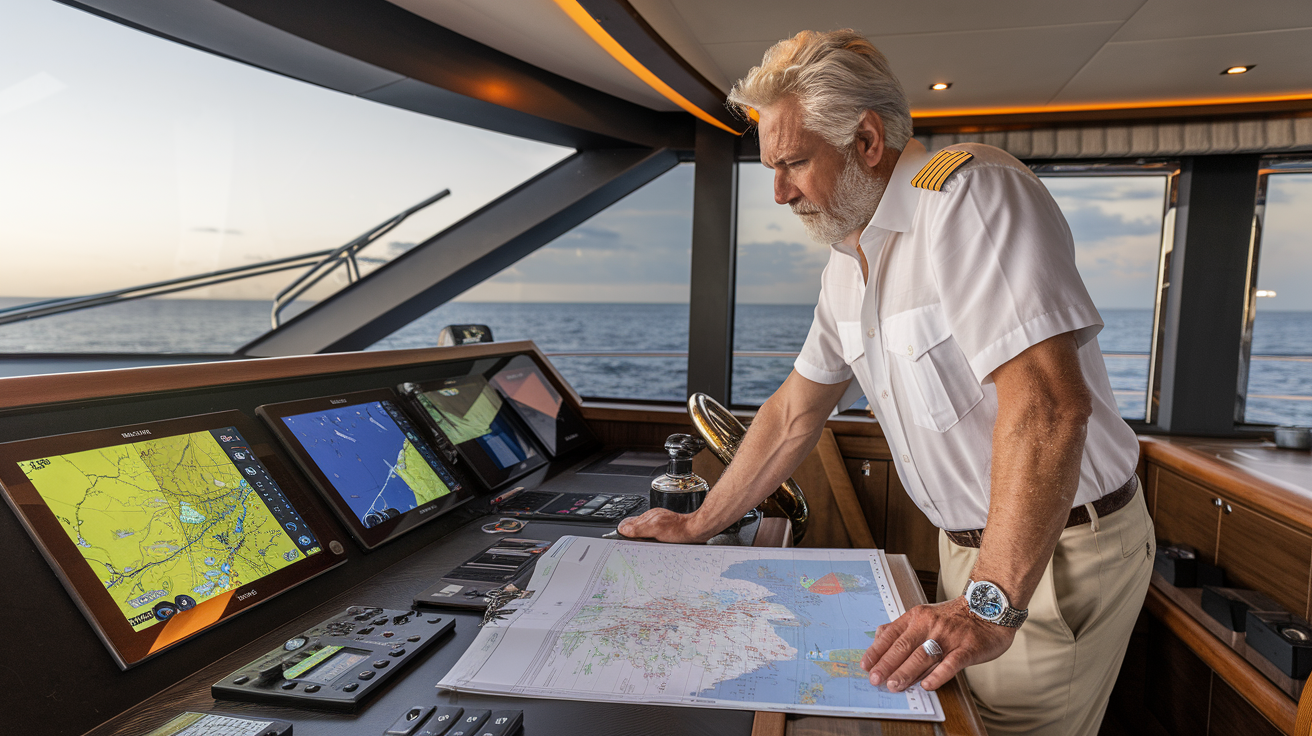
Proficiency in chart reading
In the world of yacht delivery, a captain’s ability to read and interpret nautical charts is paramount. This skill forms the foundation of safe and efficient navigation, especially when venturing into unfamiliar waters. A proficient yacht delivery captain should be able to:
- Interpret chart symbols and abbreviations
- Understand depth contours and underwater hazards
- Identify navigational aids, such as buoys and lighthouses
- Recognize restricted areas and shipping lanes
Chart reading proficiency goes beyond mere symbol recognition. It involves the ability to visualize the three-dimensional world represented by the two-dimensional chart. This skill allows captains to:
- Anticipate potential hazards
- Plan safe anchorages
- Estimate travel times between points
- Make informed decisions about route alterations
To illustrate the importance of chart reading, consider the following comparison:
| Aspect | Proficient Chart Reader | Inexperienced Chart Reader |
|---|---|---|
| Route Planning | Efficient and safe routes | Potentially longer or riskier routes |
| Hazard Avoidance | Proactive identification | Reactive navigation |
| Time Management | Accurate ETA estimates | Unpredictable arrival times |
| Fuel Efficiency | Optimized fuel consumption | Potential waste of resources |
| Emergency Response | Quick alternative route planning | Delayed or inadequate response |
A yacht delivery captain with excellent chart reading skills can significantly enhance the safety, efficiency, and overall success of the delivery voyage.
GPS and electronic navigation tools expertise
While traditional chart reading remains crucial, modern yacht delivery captains must also be adept at using GPS and other electronic navigation tools. These technologies have revolutionized maritime navigation, offering unprecedented accuracy and real-time information. A competent yacht delivery captain should demonstrate:
- Proficiency in operating various GPS systems
- Understanding of electronic chart display and information systems (ECDIS)
- Ability to integrate radar information with chart data
- Familiarity with automatic identification systems (AIS)
Electronic navigation tools provide numerous advantages:
- Real-time position tracking
- Automatic course plotting
- Collision avoidance warnings
- Integration with weather data
However, it’s crucial to remember that electronic tools are not infallible. A skilled yacht delivery captain knows how to:
- Cross-reference electronic data with traditional charts
- Recognize and troubleshoot equipment malfunctions
- Navigate safely in case of electronic system failures
Here’s a breakdown of essential electronic navigation tools and their primary functions:
| Tool | Primary Function | Secondary Benefits |
|---|---|---|
| GPS | Precise position fixing | Route tracking, speed calculation |
| ECDIS | Digital chart display | Route planning, hazard alerts |
| Radar | Obstacle detection | Weather monitoring, collision avoidance |
| AIS | Vessel identification | Traffic monitoring, collision avoidance |
| Depth Sounder | Water depth measurement | Underwater hazard detection |
Expertise in these tools allows a yacht delivery captain to make informed decisions quickly, enhancing safety and efficiency during the voyage.
Ability to plan efficient routes
Route planning is a critical skill that sets apart exceptional yacht delivery captains. This ability combines the knowledge gained from chart reading and electronic navigation with an understanding of various factors that influence a yacht’s journey. Efficient route planning involves:
- Analyzing weather patterns and forecasts
- Considering ocean currents and tides
- Evaluating fuel consumption and range
- Planning for potential emergencies and safe harbors
A well-planned route offers numerous benefits:
- Reduced fuel consumption
- Shorter delivery times
- Enhanced safety through avoidance of hazardous areas
- Improved comfort for crew and passengers
- Minimized wear and tear on the yacht
Effective route planning requires a captain to consider multiple scenarios and be prepared to adapt as conditions change. This involves:
- Creating primary and alternative routes
- Identifying key decision points along the journey
- Establishing communication protocols with shore support
- Preparing contingency plans for various situations
Let’s examine the key considerations in route planning:
| Factor | Importance | Impact on Route |
|---|---|---|
| Weather | High | Affects safety, comfort, and speed |
| Currents | Medium to High | Influences fuel efficiency and travel time |
| Fuel Efficiency | High | Determines range and potential refueling stops |
| Port Accessibility | Medium | Affects potential stop-overs and emergencies |
| Vessel Capabilities | High | Dictates feasible routes and average speed |
| Crew Experience | Medium | Influences route complexity and risk tolerance |
A yacht delivery captain with strong route planning skills can optimize the journey, ensuring a safe and efficient delivery while minimizing unexpected challenges.
Now that we’ve explored the essential navigation skills of a yacht delivery captain, it’s clear that these abilities form the cornerstone of successful yacht deliveries. From traditional chart reading to mastering modern electronic tools and planning efficient routes, these skills work in tandem to ensure safe and timely voyages. With this solid foundation in navigation, a captain is well-equipped to handle the myriad challenges that may arise during a yacht delivery. Next, we’ll delve into another crucial aspect of a yacht delivery captain’s repertoire: their communication abilities, which play a vital role in coordinating with crew, clients, and authorities throughout the journey.
Communication Abilities
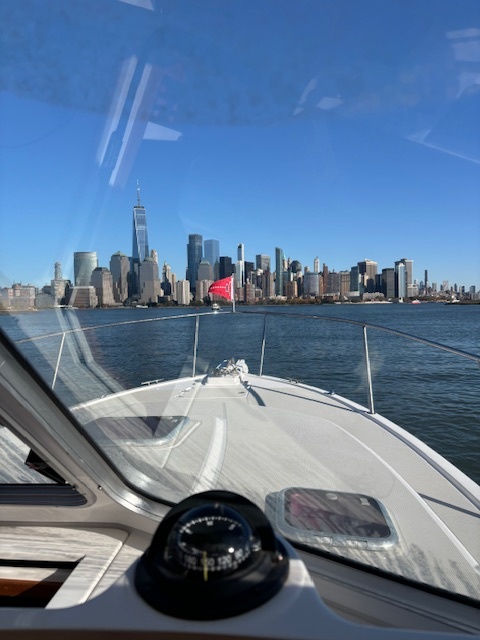
Clear and concise instructions
In the world of yacht delivery, clear and concise instructions are paramount. A skilled yacht delivery captain must possess the ability to communicate effectively, ensuring that every crew member understands their role and responsibilities. This skill is crucial for maintaining a safe and efficient operation during the delivery process.
The importance of clarity in maritime communication
Clear instructions are vital in maritime settings for several reasons:
- Safety: Misunderstandings can lead to accidents or dangerous situations.
- Efficiency: Well-communicated instructions save time and resources.
- Team cohesion: Clear directives foster a sense of unity and purpose among the crew.
- Legal compliance: Precise communication helps ensure adherence to maritime regulations.
To illustrate the impact of clear instructions, consider the following comparison:
| Unclear Instruction | Clear Instruction | Potential Outcome |
|---|---|---|
| “Adjust the sails.” | “Trim the mainsail by 15 degrees to starboard.” | Precise sail adjustment, improved performance |
| “Watch out for that thing.” | “Be aware of the floating debris 50 meters off the port bow.” | Heightened situational awareness, avoiding hazards |
| “Get ready to dock.” | “Prepare fenders and mooring lines for port-side docking in 10 minutes.” | Smooth docking procedure, reduced risk of damage |
A yacht delivery captain who excels in providing clear and concise instructions will:
- Use specific terminology and avoid ambiguity
- Provide context for each instruction
- Confirm understanding through feedback loops
- Prioritize information based on urgency and importance
- Adapt communication style to the crew’s experience level
Multilingual capabilities
In an increasingly globalized maritime industry, multilingual capabilities are becoming a highly sought-after quality in yacht delivery captains. The ability to communicate in multiple languages can significantly enhance the captain’s effectiveness and versatility.
Benefits of multilingual yacht captains
- Improved crew management: Ability to communicate with diverse crew members
- Enhanced client relations: Better interaction with international yacht owners
- Easier port navigation: Smoother communication with local authorities and service providers
- Expanded job opportunities: Access to a wider range of delivery contracts
- Cultural sensitivity: Better understanding of diverse maritime traditions and practices
Key languages for yacht delivery captains
While English remains the primary language of international maritime communication, proficiency in the following languages can be particularly beneficial:
- Spanish
- French
- Italian
- Greek
- Russian
A yacht delivery captain with multilingual capabilities can navigate complex situations more effectively. For instance, during an emergency in foreign waters, the ability to communicate clearly with local coast guard or port authorities can be crucial.
Interpersonal skills with crew and clients
Interpersonal skills are the cornerstone of effective leadership and client satisfaction in yacht delivery. A captain’s ability to interact positively with both crew members and clients can make the difference between a successful delivery and a challenging experience.
Essential interpersonal skills for yacht delivery captains
- Active listening
- Empathy
- Conflict resolution
- Patience
- Adaptability
- Cultural sensitivity
- Professionalism
- Emotional intelligence
Building rapport with crew members
A yacht delivery captain must foster a positive working environment to ensure smooth operations. This involves:
- Establishing clear roles and expectations
- Encouraging open communication
- Recognizing and appreciating individual contributions
- Providing constructive feedback
- Leading by example
Managing client relationships
Yacht owners and brokers expect a high level of service and professionalism. Captains can excel in client relations by:
- Maintaining regular, transparent communication
- Demonstrating expertise and instilling confidence
- Being responsive to client concerns and preferences
- Providing detailed, timely reports on the yacht’s condition and progress
- Anticipating and addressing potential issues proactively
To illustrate the impact of strong interpersonal skills, consider the following scenarios:
| Scenario | Poor Interpersonal Skills | Strong Interpersonal Skills | Outcome |
|---|---|---|---|
| Crew disagreement | Ignores conflict, leading to tension | Addresses issues promptly, facilitates resolution | Improved team morale and performance |
| Client request for route change | Dismisses request without explanation | Listens to client, explains implications, finds compromise | Enhanced client satisfaction and trust |
| Language barrier with local authorities | Becomes frustrated, fails to obtain necessary clearance | Uses patience and non-verbal communication, seeks translator if needed | Smooth port entry and compliance with local regulations |
By honing these communication abilities, a yacht delivery captain can ensure a smoother, more efficient, and more enjoyable experience for all parties involved in the delivery process. These skills not only contribute to the success of individual deliveries but also help build a captain’s reputation in the industry, leading to more opportunities and referrals.
As we move forward, it’s important to recognize that while communication is crucial, it’s just one aspect of a yacht delivery captain’s skill set. The next quality we’ll explore is equally vital for ensuring the safety and success of every voyage.
Safety-First Mindset
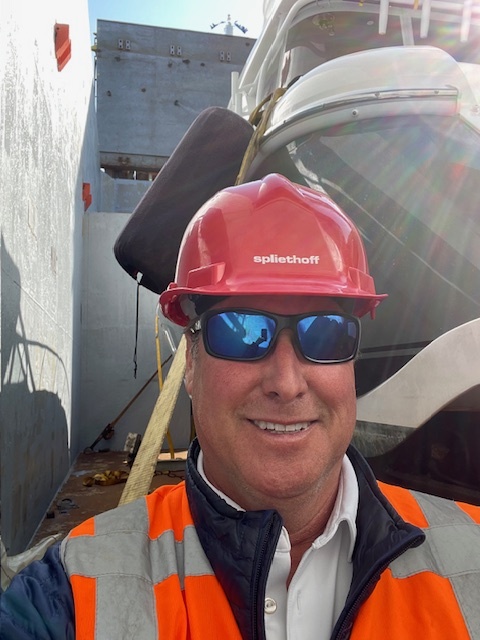
Emergency preparedness
A yacht delivery captain with a safety-first mindset understands that being prepared for emergencies is paramount. This preparedness goes beyond simply having the right equipment on board; it encompasses a comprehensive approach to anticipating and managing potential crises at sea.
One of the key aspects of emergency preparedness is having a well-thought-out emergency response plan. This plan should cover various scenarios, including:
- Man overboard situations
- Fire on board
- Severe weather conditions
- Medical emergencies
- Collision or grounding incidents
- Equipment failure
A competent yacht delivery captain will ensure that all crew members are familiar with this plan and can execute their roles effectively in case of an emergency. Regular drills and simulations are essential to maintain readiness and identify areas for improvement.
Equipment checks are another crucial component of emergency preparedness. A safety-conscious captain will:
- Regularly inspect and maintain all safety equipment
- Ensure life rafts and life jackets are in good condition and easily accessible
- Check that fire extinguishers are fully charged and strategically placed
- Verify that distress signals and communication devices are functional
- Keep first aid kits well-stocked and up-to-date
| Emergency Equipment | Inspection Frequency | Maintenance Required |
|---|---|---|
| Life rafts | Every 6 months | Annual servicing |
| Life jackets | Before each voyage | Replace if damaged |
| Fire extinguishers | Monthly | Annual recertification |
| Distress signals | Before each voyage | Replace expired items |
| First aid kits | Monthly | Replenish supplies |
A yacht delivery captain with a strong safety-first mindset will also prioritize staying informed about the latest maritime safety regulations and best practices. This commitment to continuous learning ensures that the captain can implement the most effective safety measures and respond appropriately to changing conditions at sea.
Up-to-date safety protocols knowledge
In the ever-evolving world of maritime safety, a yacht delivery captain must remain current with the latest safety protocols and regulations. This knowledge is crucial not only for compliance but also for ensuring the highest level of safety for the crew and vessel.
Key areas of safety protocol knowledge include:
- International Maritime Organization (IMO) regulations
- Flag state requirements
- Port state control inspections
- Safety of Life at Sea (SOLAS) conventions
- International Convention for the Prevention of Pollution from Ships (MARPOL)
- International Safety Management (ISM) Code
A proficient yacht delivery captain will actively seek out opportunities to update their knowledge through:
- Attending maritime safety seminars and workshops
- Participating in online courses and webinars
- Subscribing to industry publications and newsletters
- Networking with other professionals in the field
- Engaging with maritime safety organizations
One of the most critical aspects of maintaining up-to-date safety protocol knowledge is understanding and implementing the latest navigational safety measures. This includes staying informed about:
- Changes in navigation rules and regulations
- Updates to electronic chart display and information systems (ECDIS)
- Advancements in automatic identification systems (AIS)
- Developments in vessel traffic services (VTS)
A yacht delivery captain with a strong safety-first mindset will also ensure that all crew members are briefed on the latest safety protocols and understand their roles in maintaining a safe environment on board. This may involve regular safety meetings, training sessions, and the distribution of updated safety manuals and checklists.
First aid and medical training
While yacht delivery captains are not expected to be fully qualified medical professionals, having a solid foundation in first aid and medical training is crucial for ensuring the safety and well-being of all on board. This knowledge can be life-saving in situations where immediate medical assistance is not readily available.
A competent yacht delivery captain should possess the following medical skills and knowledge:
- Basic life support techniques
- CPR and automated external defibrillator (AED) use
- Wound care and management
- Treatment of common marine-related injuries
- Recognition and management of seasickness
- Handling of medical emergencies such as heart attacks or strokes
- Administration of basic medications
- Proper use of the ship’s medical kit
To maintain and improve these skills, yacht delivery captains should:
- Regularly renew their first aid and CPR certifications
- Attend advanced medical training courses specific to maritime environments
- Practice emergency medical scenarios with crew members
- Stay informed about the latest developments in maritime medicine
A crucial aspect of medical preparedness is maintaining a well-stocked and organized medical kit. A safety-conscious yacht delivery captain will ensure that the medical kit contains:
| Category | Items |
|---|---|
| Medications | Pain relievers, antihistamines, anti-nausea drugs, antibiotics |
| Wound care | Sterile dressings, bandages, antiseptic solutions, suture kits |
| Diagnostic tools | Thermometer, blood pressure cuff, pulse oximeter |
| Immobilization devices | Splints, neck collars, slings |
| Emergency equipment | Oxygen tanks, masks, bag valve masks |
In addition to having the necessary skills and equipment, a yacht delivery captain with a safety-first mindset will also be familiar with telemedicine services and satellite communication systems that can provide remote medical advice in case of emergencies.
Understanding the limitations of onboard medical capabilities is equally important. A responsible captain will know when to seek professional medical assistance, whether through radio consultation or by diverting to the nearest port with adequate medical facilities.
By prioritizing safety through emergency preparedness, up-to-date safety protocol knowledge, and comprehensive first aid and medical training, a yacht delivery captain demonstrates their commitment to the well-being of the crew and the vessel. This safety-first mindset is an essential quality that sets apart exceptional captains in the yacht delivery industry.
As we’ve explored the critical aspects of a safety-first mindset, it’s clear that this quality is fundamental to successful yacht delivery. However, a captain’s responsibilities extend beyond safety measures. Next, we’ll examine another crucial attribute that complements safety consciousness: mechanical aptitude.
Mechanical Aptitude
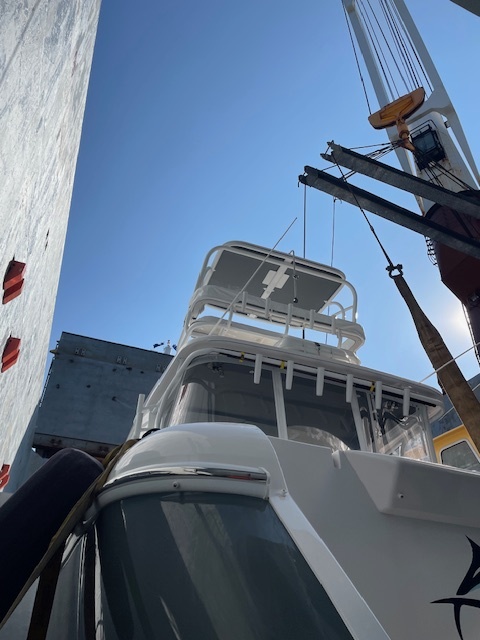
Basic engine troubleshooting
When it comes to yacht delivery, a captain’s mechanical aptitude is crucial, particularly their ability to troubleshoot engine issues. A skilled yacht delivery captain should possess a comprehensive understanding of marine engines and be able to diagnose and resolve common problems that may arise during a voyage.
One of the primary skills a yacht delivery captain needs is the ability to perform basic engine checks. This includes:
- Inspecting oil levels and quality
- Checking coolant levels and condition
- Examining belts for wear and proper tension
- Assessing fuel filters for contamination
- Monitoring exhaust systems for abnormalities
A captain with strong mechanical aptitude can quickly identify unusual sounds, vibrations, or performance issues that may indicate an developing problem. This proactive approach can prevent minor issues from escalating into major breakdowns at sea.
Here’s a table outlining some common engine problems and their potential causes:
| Problem | Possible Causes | Basic Troubleshooting Steps |
|---|---|---|
| Engine won’t start | Dead battery, fuel issues, starter motor failure | Check battery connections, fuel supply, and attempt jump-start |
| Overheating | Coolant leak, faulty thermostat, clogged raw water intake | Check coolant levels, inspect hoses for leaks, clean raw water strainer |
| Loss of power | Clogged fuel filters, fouled injectors, air in fuel system | Replace fuel filters, bleed fuel system, check for fuel contamination |
| Excessive smoke | Oil leaks, worn piston rings, incorrect fuel-air mixture | Check oil levels, inspect for visible leaks, adjust fuel-air mixture if possible |
| Unusual noises | Loose components, worn bearings, valve train issues | Inspect for loose parts, check oil pressure, listen for localized sounds |
A yacht delivery captain with strong troubleshooting skills can work through these issues methodically, often resolving problems without the need for external assistance. This not only saves time and money but also ensures the safety and continuity of the voyage.
Electrical system understanding
In addition to engine knowledge, a competent yacht delivery captain must have a solid grasp of marine electrical systems. Modern yachts are equipped with complex electrical setups that power everything from navigation equipment to comfort amenities. A captain’s ability to understand and manage these systems is essential for a successful delivery.
Key aspects of electrical system knowledge include:
- Battery management and charging systems
- AC and DC power distribution
- Inverter and generator operation
- Navigation and communication equipment power requirements
- Electrical safety and circuit protection
A yacht delivery captain should be able to read and interpret electrical schematics, which is crucial for troubleshooting issues. They should also understand the importance of proper wire sizing, fuse ratings, and circuit breaker functionality to prevent electrical fires or equipment damage.
Here’s a list of essential electrical skills for a yacht delivery captain:
- Ability to test and replace fuses and circuit breakers
- Knowledge of battery types, capacities, and maintenance requirements
- Understanding of shore power systems and safe connection procedures
- Familiarity with marine-grade wiring and proper installation techniques
- Expertise in using multimeters and other diagnostic tools
One of the most critical aspects of electrical system management is power conservation. A skilled yacht delivery captain knows how to balance power consumption with generation capabilities, ensuring that essential systems remain operational throughout the journey. This might involve creating a power management plan that prioritizes critical equipment and implements energy-saving measures when necessary.
Ability to perform minor repairs at sea
The open ocean can be an unforgiving environment, and mechanical issues don’t always wait for convenient times to arise. A yacht delivery captain’s ability to perform minor repairs at sea can mean the difference between a successful voyage and a costly emergency situation.
Some essential repair skills include:
- Replacing impellers in raw water pumps
- Changing fuel and oil filters
- Repairing or replacing broken belts
- Patching small hull leaks or through-hull fittings
- Fixing minor plumbing issues
A well-prepared yacht delivery captain will have a comprehensive toolkit and a selection of spare parts on board. This foresight allows for quick repairs and reduces the likelihood of being stranded due to a minor mechanical failure.
Here’s a table of common at-sea repairs and the tools required:
| Repair Task | Tools and Materials Needed |
|---|---|
| Impeller replacement | Screwdrivers, pliers, spare impeller, gasket material |
| Filter changes | Filter wrench, spare filters, rags, catchment container |
| Belt replacement | Wrenches, spare belts, tension gauge |
| Hull patching | Epoxy putty, fiberglass cloth, sandpaper, protective gear |
| Plumbing repairs | Pipe wrenches, PTFE tape, spare hose clamps, various pipe fittings |
It’s important to note that while a yacht delivery captain should be capable of these repairs, they must also know their limits. Some issues may require professional attention, and a good captain will make the call to seek assistance when necessary.
The ability to perform these repairs not only keeps the yacht operational but also demonstrates the captain’s resourcefulness and problem-solving skills. This can be particularly reassuring for yacht owners who entrust their valuable vessels to delivery captains for long journeys.
In conclusion, a yacht delivery captain’s mechanical aptitude is a critical quality that encompasses engine troubleshooting, electrical system understanding, and the ability to perform minor repairs at sea. These skills contribute significantly to the safety, efficiency, and success of yacht deliveries. As we move forward, we’ll explore another essential quality that complements these technical skills: physical fitness, which is crucial for the demanding nature of long-distance yacht deliveries.
Weather Interpretation
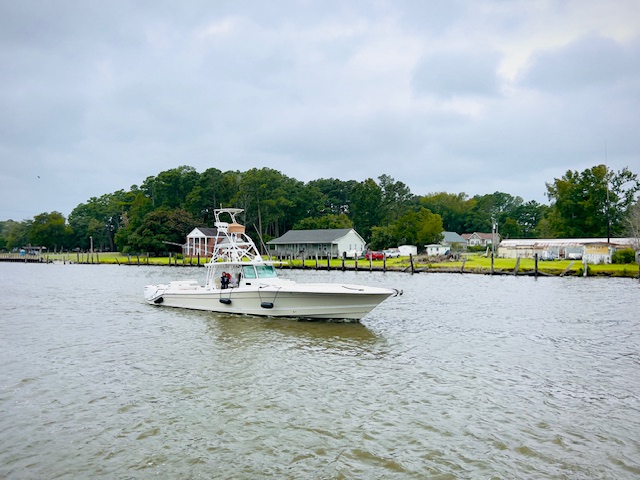
Reading weather charts and forecasts
A skilled yacht delivery captain must possess an exceptional ability to read and interpret weather charts and forecasts. This crucial skill ensures the safety of the crew, passengers, and vessel during the journey. Let’s delve into the essential aspects of weather chart interpretation that every competent yacht captain should master:
- Surface Pressure Systems:
- Identifying high and low-pressure areas
- Recognizing frontal systems (cold, warm, and occluded fronts)
- Understanding isobars and their implications for wind patterns
- Wind Information:
- Interpreting wind barbs and speed indicators
- Recognizing wind direction and potential shifts
- Assessing the impact of wind on sea state and sailing conditions
- Precipitation and Cloud Cover:
- Identifying areas of potential rainfall or storms
- Understanding cloud types and their associated weather patterns
- Recognizing symbols for various precipitation types (rain, snow, hail)
- Sea State and Wave Height:
- Interpreting wave height and direction information
- Understanding the relationship between wind and wave patterns
- Assessing potential hazards related to sea state
- Temperature and Humidity:
- Reading temperature gradients and their impact on weather stability
- Understanding dew point and its relation to fog formation
- Recognizing potential icing conditions in colder regions
A yacht delivery captain must be proficient in interpreting various types of weather charts and forecasts, including:
| Chart Type | Key Information | Importance |
|---|---|---|
| Surface Analysis Charts | Current weather conditions, pressure systems, fronts | Provides a snapshot of current weather patterns |
| Prognostic Charts | Predicted weather conditions for future time intervals | Helps in planning routes and anticipating changes |
| Upper Air Charts | Wind patterns and temperatures at different altitudes | Crucial for understanding larger weather systems |
| Satellite Imagery | Cloud cover, storm systems, and broader weather patterns | Offers a visual representation of current conditions |
| Radar Charts | Precipitation intensity and movement | Essential for short-term weather predictions |
By mastering the interpretation of these charts and forecasts, a yacht delivery captain can make informed decisions about route planning, departure times, and potential safety concerns.
Understanding of local weather patterns
While general weather interpretation skills are crucial, a truly exceptional yacht delivery captain must also possess a deep understanding of local weather patterns. This knowledge allows for more accurate predictions and safer navigation in specific regions. Key aspects of local weather understanding include:
- Coastal Effects:
- Sea and land breezes
- Coastal convergence zones
- Orographic lifting and its impact on precipitation
- Ocean Currents:
- Major ocean currents and their influence on local weather
- Upwelling and downwelling effects
- Impact of currents on wave patterns and sea state
- Seasonal Patterns:
- Monsoon systems in tropical regions
- Hurricane and typhoon seasons in different parts of the world
- El Niño and La Niña effects on global weather patterns
- Microclimates:
- Understanding localized weather phenomena in specific areas
- Recognizing the impact of topography on wind and precipitation patterns
- Identifying potential “weather traps” in coastal regions
- Regional Weather Phenomena:
- Föhn winds and their impact on temperature and humidity
- Mistral winds in the Mediterranean
- Nor’easters along the East Coast of North America
A yacht delivery captain should build a comprehensive knowledge base of local weather patterns for different regions they frequently navigate. This expertise allows for more accurate interpretation of general weather forecasts and better decision-making in various sailing conditions.
Decision-making based on weather conditions
The ability to make sound decisions based on weather conditions is perhaps the most critical aspect of a yacht delivery captain’s weather interpretation skills. This involves synthesizing information from various sources and applying it to the specific circumstances of the voyage. Key considerations in weather-based decision-making include:
- Route Planning:
- Choosing the optimal route based on long-term weather forecasts
- Identifying potential safe harbors or sheltered areas along the route
- Planning for potential weather-related delays or detours
- Departure Timing:
- Determining the best time to depart based on weather windows
- Assessing the risks of delaying departure versus potential en-route weather hazards
- Considering crew fatigue and safety in relation to weather conditions
- On-the-Go Adjustments:
- Continuously monitoring weather updates during the voyage
- Making course corrections based on changing weather patterns
- Deciding when to seek shelter or alter speed to avoid adverse conditions
- Safety Considerations:
- Assessing the vessel’s capabilities in relation to forecasted weather conditions
- Determining when conditions exceed safe operating parameters
- Implementing safety protocols in anticipation of severe weather
- Communication:
- Keeping crew and clients informed about weather-related decisions
- Liaising with shore-based support for updated weather information
- Reporting observed weather conditions to relevant authorities
A skilled yacht delivery captain should employ a systematic approach to weather-based decision-making:
- Gather Information: Collect data from multiple reliable sources
- Analyze: Interpret the data in the context of local patterns and vessel capabilities
- Assess Risks: Evaluate potential hazards and their likelihood
- Develop Options: Create multiple plans based on different weather scenarios
- Make a Decision: Choose the safest and most efficient course of action
- Communicate: Inform all relevant parties about the decision and rationale
- Monitor and Adjust: Continuously reassess conditions and be prepared to modify plans
By following this approach, a yacht delivery captain can ensure the safety of the vessel, crew, and passengers while maintaining efficiency in navigation.
In conclusion, weather interpretation is a fundamental skill for any yacht delivery captain. The ability to read weather charts and forecasts, understand local weather patterns, and make informed decisions based on weather conditions is crucial for safe and efficient yacht delivery. A captain who excels in these areas will be better equipped to navigate challenging conditions, avoid potential hazards, and provide a smooth and secure journey for clients and crew alike.
Culinary Skills
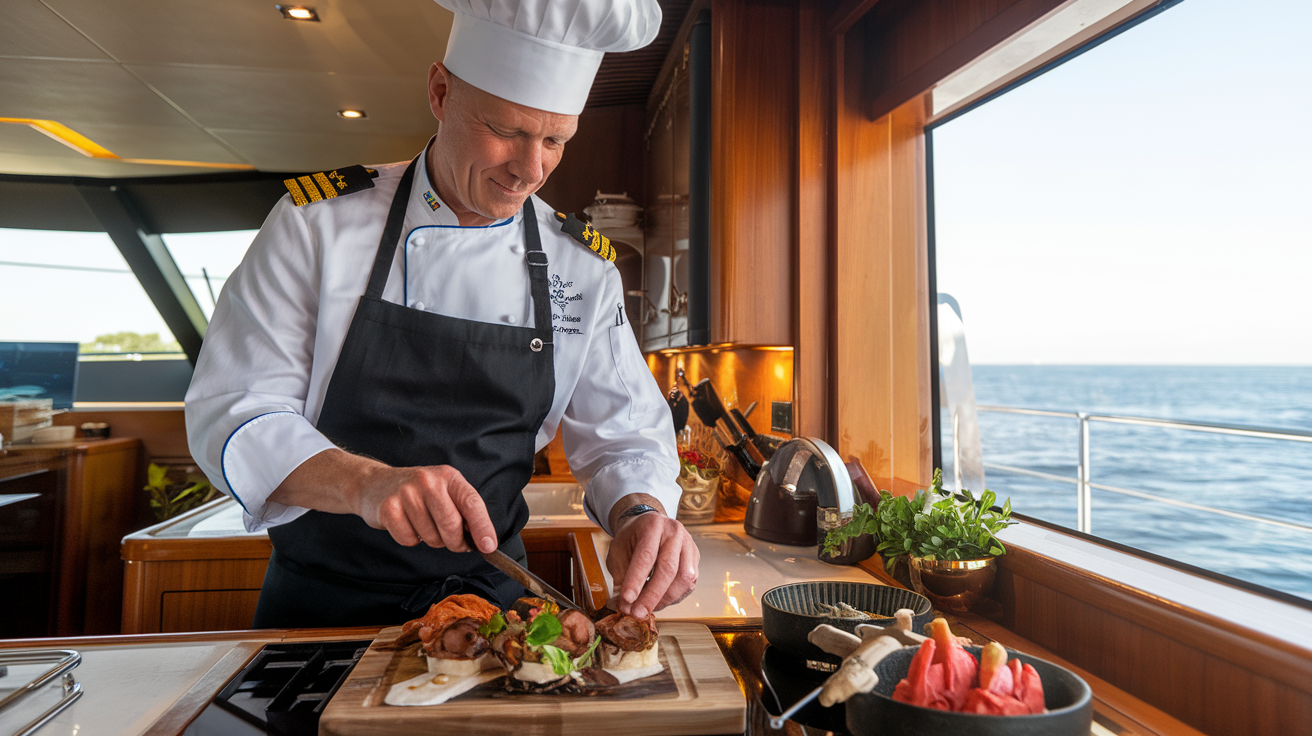
Basic cooking abilities
When it comes to yacht delivery, the captain’s role extends far beyond navigation and seamanship. One often overlooked yet crucial skill is the ability to prepare meals on board. A yacht delivery captain with basic cooking abilities can significantly enhance the journey for both crew and clients.
Cooking at sea presents unique challenges. The galley (kitchen) on a yacht is typically compact, with limited resources and potentially unstable conditions. A skilled captain should be able to:
- Prepare simple, nutritious meals using available ingredients
- Cook efficiently in a small space
- Adapt recipes to suit the equipment on board
- Manage food preparation while maintaining control of the vessel
Here’s a quick comparison of cooking on land versus at sea:
| Aspect | Cooking on Land | Cooking at Sea |
|---|---|---|
| Space | Typically spacious | Limited and compact |
| Stability | Stable environment | Moving and potentially unstable |
| Equipment | Full range of appliances | Limited, specialized equipment |
| Ingredient availability | Easy access to stores | Limited to on-board supplies |
| Time management | Flexible | Must coordinate with navigation duties |
A yacht delivery captain with basic cooking skills can ensure that the crew remains well-fed and energized throughout the journey, contributing to overall safety and efficiency.
Dietary restrictions knowledge
In today’s diverse world, understanding and accommodating various dietary restrictions is a valuable asset for a yacht delivery captain. This knowledge becomes particularly important when delivering yachts with clients or crew members who have specific dietary needs.
Key areas of dietary restriction knowledge include:
- Allergies and intolerances (e.g., gluten, nuts, dairy)
- Religious dietary laws (e.g., kosher, halal)
- Lifestyle choices (e.g., vegetarian, vegan)
- Health-related diets (e.g., low-sodium, diabetic)
A captain who can cater to these needs demonstrates professionalism and care for those on board. This skill can make a significant difference in client satisfaction and crew well-being during long voyages.
Provisioning expertise
Provisioning is the art of stocking a yacht with all necessary supplies, particularly food and beverages, for a journey. A yacht delivery captain with provisioning expertise can ensure that the vessel is well-stocked for the entire trip, taking into account:
- Duration of the journey
- Number of people on board
- Dietary requirements and preferences
- Storage capacity and facilities on the yacht
- Potential for unexpected delays or changes in plans
Effective provisioning involves:
- Meal planning for the entire trip
- Creating detailed shopping lists
- Budgeting and cost management
- Knowledge of long-lasting and versatile ingredients
- Understanding of how different foods store in marine environments
A well-provisioned yacht contributes to a smooth and enjoyable delivery experience. It reduces the need for potentially costly and time-consuming stops for supplies during the journey.
Food safety and storage understanding
Food safety is paramount in the confined space of a yacht, where proper storage can be challenging and the consequences of foodborne illness can be severe. A yacht delivery captain must have a solid understanding of food safety principles and storage techniques specific to the marine environment.
Key aspects of food safety and storage on a yacht include:
- Temperature control
- Cross-contamination prevention
- Proper food storage techniques
- Hygiene and sanitation practices
- Safe water management
Let’s break down these aspects in more detail:
- Temperature control:
- Understand safe temperature zones for different types of food
- Properly use and maintain refrigeration and freezer units
- Monitor food temperatures during preparation and storage
- Cross-contamination prevention:
- Use separate cutting boards and utensils for raw and cooked foods
- Store raw meats below other foods in the refrigerator
- Practice proper hand washing and glove use
- Proper food storage techniques:
- Use airtight containers to prevent spoilage and pest infestation
- Implement a first-in, first-out (FIFO) system for food rotation
- Understand how different foods react to marine conditions (humidity, temperature fluctuations)
- Hygiene and sanitation practices:
- Maintain a clean galley and food preparation areas
- Properly clean and sanitize utensils and surfaces
- Manage waste effectively to prevent contamination
- Safe water management:
- Ensure a supply of potable water for drinking and cooking
- Properly maintain and use water filtration systems
- Understand the risks associated with using seawater in food preparation
A yacht delivery captain with a strong grasp of food safety and storage practices can prevent foodborne illnesses, reduce food waste, and ensure the overall health and well-being of everyone on board.
Now that we’ve explored the importance of culinary skills for a yacht delivery captain, including basic cooking abilities, dietary restrictions knowledge, provisioning expertise, and food safety understanding, it’s clear that these skills go far beyond mere convenience. They contribute significantly to the safety, efficiency, and satisfaction of both crew and clients during a yacht delivery. As we move forward, we’ll examine another crucial quality that sets apart exceptional yacht delivery captains: physical fitness.
Physical Fitness

Stamina for long voyages
When it comes to yacht delivery, physical fitness is a crucial quality that often gets overlooked. A yacht delivery captain needs to possess exceptional stamina to endure long voyages across vast stretches of open water. These journeys can last for days, weeks, or even months, demanding sustained physical and mental endurance.
Long-distance sailing requires captains to maintain alertness and operational efficiency throughout extended periods. They must be prepared to handle various challenges that arise during these lengthy trips, including:
- Irregular sleep patterns
- Constant exposure to the elements
- Limited physical space for movement
- Potential seasickness
- Monotony of extended time at sea
To build and maintain the necessary stamina, successful yacht delivery captains often engage in:
- Cardiovascular exercises (swimming, running, cycling)
- Endurance training
- Proper nutrition and hydration practices
- Sleep management techniques
- Stress-reduction activities (meditation, yoga)
| Activity | Benefits for Yacht Delivery Captains |
|---|---|
| Swimming | Improves overall body strength and cardiovascular endurance |
| Running | Builds stamina and leg strength for long periods on deck |
| Cycling | Enhances cardiovascular fitness without high impact on joints |
| Yoga | Increases flexibility and helps manage stress during long voyages |
A captain with excellent stamina can maintain focus and make critical decisions even after days at sea, ensuring the safety of the vessel, crew, and cargo.
Strength for handling equipment
Physical strength is another vital aspect of a yacht delivery captain’s fitness. The marine environment demands the ability to handle heavy equipment, manage sails, and operate various mechanical systems on board. A captain must be strong enough to:
- Hoist and lower sails
- Operate winches and windlasses
- Maneuver anchors and mooring lines
- Carry out emergency repairs
- Assist in loading and unloading supplies
Strength training exercises that yacht delivery captains often incorporate into their fitness routines include:
- Weightlifting (focusing on compound exercises)
- Resistance band workouts
- Bodyweight exercises (push-ups, pull-ups, squats)
- Functional training specific to sailing tasks
It’s important to note that while raw strength is beneficial, functional strength that mimics the movements and tasks performed on a yacht is even more crucial. This type of strength not only helps in handling equipment but also reduces the risk of injury during demanding maneuvers.
| Exercise | Sailing-Related Benefit |
|---|---|
| Deadlifts | Improves overall body strength for lifting heavy equipment |
| Rowing machine | Enhances back and arm strength for sail handling |
| Planks | Builds core stability for balance on a moving deck |
| Farmer’s walks | Increases grip strength for rope handling |
A physically strong captain can efficiently manage the yacht’s equipment, ensuring smooth operations and minimizing the risk of accidents or equipment failure due to improper handling.
Agility in challenging conditions
The third component of physical fitness crucial for yacht delivery captains is agility. The ability to move quickly and easily, especially in challenging conditions, can mean the difference between safety and disaster at sea. Agility is essential for:
- Maintaining balance on a pitching deck
- Navigating through tight spaces on the yacht
- Responding swiftly to sudden changes in weather or sea conditions
- Performing emergency maneuvers
- Assisting crew members in difficult situations
To enhance agility, yacht delivery captains often engage in:
- Balance training exercises
- Plyometric workouts
- Agility ladder drills
- Yoga or Pilates for flexibility and core strength
- Sport-specific drills that mimic on-board movements
Developing agility also involves improving reaction time and spatial awareness, both crucial skills when operating in the dynamic environment of the open sea.
| Agility Exercise | On-Board Application |
|---|---|
| Balance board training | Improves stability on a moving yacht deck |
| Plyometric box jumps | Enhances ability to quickly move between deck levels |
| Agility cone drills | Increases nimbleness for navigating through tight spaces |
| Reaction ball exercises | Sharpens reflexes for responding to sudden changes |
An agile captain can navigate through rough seas, respond quickly to emergencies, and maintain control of the yacht in various challenging conditions, ensuring the safety of all on board.
The combination of stamina, strength, and agility forms the foundation of physical fitness required for a yacht delivery captain. These qualities not only enhance the captain’s ability to perform their duties effectively but also contribute to the overall safety and success of the delivery voyage.
Moreover, a physically fit captain sets a positive example for the crew, promoting a culture of health and readiness aboard the yacht. This can lead to improved morale, better teamwork, and a more efficient operation overall.
It’s worth noting that while physical fitness is crucial, it should be balanced with other essential qualities such as navigation skills, communication abilities, and a safety-first mindset. A well-rounded yacht delivery captain possesses a combination of physical prowess and mental acuity, ensuring they can handle any challenge that may arise during a voyage.
As we move forward, we’ll explore another critical quality that sets apart exceptional yacht delivery captains – their ability to adapt and solve problems in the ever-changing marine environment.
Adaptability and Problem-Solving
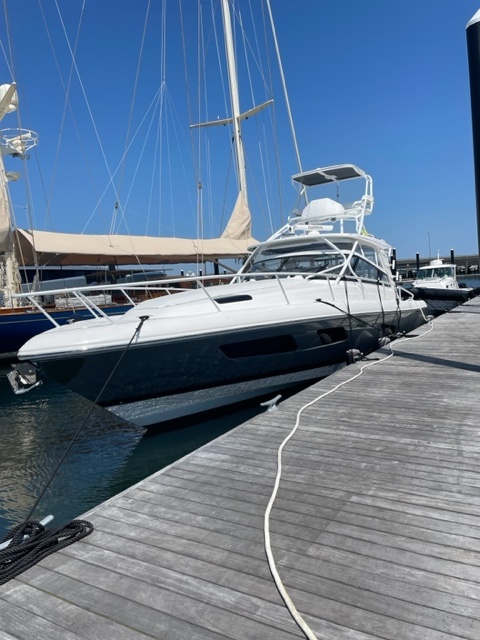
Quick thinking in unexpected situations
In the unpredictable world of yacht delivery, a captain’s ability to think on their feet is paramount. Unexpected situations can arise at any moment, from sudden weather changes to mechanical failures. A top-notch yacht delivery captain must possess the mental agility to assess these situations rapidly and make informed decisions under pressure.
Consider the following scenarios where quick thinking is crucial:
- Navigational hazards: Unexpected obstacles or changes in water depth
- Equipment malfunctions: Sudden failure of critical systems
- Medical emergencies: Crew member injuries or illnesses
- Severe weather: Rapid deterioration of sea conditions
- Port closures: Last-minute changes to docking arrangements
A skilled yacht delivery captain should be able to:
- Assess the situation quickly and accurately
- Prioritize immediate actions
- Communicate clearly with the crew
- Implement contingency plans
- Adapt existing protocols to fit unique circumstances
Here’s a comparison of how an adaptable captain versus a rigid one might handle unexpected situations:
| Situation | Adaptable Captain | Rigid Captain |
|---|---|---|
| Sudden storm | Quickly alters course, secures loose items, and briefs crew | Sticks to original plan, potentially endangering vessel and crew |
| Engine failure | Immediately begins troubleshooting while preparing alternative propulsion methods | Becomes flustered, wastes time before addressing the issue |
| Crew injury | Swiftly administers first aid and considers evacuation options if necessary | Hesitates to deviate from schedule, potentially worsening the situation |
| Port closure | Quickly identifies alternative harbors and adjusts route accordingly | Insists on waiting at closed port, causing delays and potential safety issues |
The ability to think quickly and adapt to unexpected situations is a hallmark of an exceptional yacht delivery captain. This skill not only ensures the safety of the vessel and crew but also contributes to a smoother, more efficient delivery process.
Flexibility with itinerary changes
While a well-planned itinerary is essential for any yacht delivery, the reality of maritime travel often necessitates changes on the fly. A top-tier yacht delivery captain must be flexible enough to accommodate these changes without compromising the overall mission or safety of the vessel.
Reasons for itinerary changes may include:
- Weather conditions
- Mechanical issues
- Client requests
- Port availability
- Crew health concerns
- Geopolitical events
An adaptable captain should be able to:
- Reassess routes quickly
- Recalculate fuel consumption and provisioning needs
- Update crew and clients on changes
- Identify new stopover points if necessary
- Adjust speed and sailing tactics to meet new timelines
Let’s examine how flexibility can impact a yacht delivery:
| Aspect | Flexible Approach | Inflexible Approach |
|---|---|---|
| Route Planning | Considers multiple alternatives and is ready to switch | Sticks rigidly to pre-planned route |
| Time Management | Builds buffer time into schedule for unexpected delays | Assumes everything will go according to plan |
| Client Communication | Keeps clients informed of changes and reasons behind them | Reluctant to inform clients of deviations from original plan |
| Resource Allocation | Adjusts fuel and supply usage based on new circumstances | Fails to account for changes in consumption due to route alterations |
| Crew Morale | Maintains positive attitude, viewing changes as challenges to overcome | Becomes stressed and transfers anxiety to crew |
A captain’s flexibility in handling itinerary changes not only ensures a successful delivery but also demonstrates professionalism and reliability to clients. This quality can lead to repeat business and positive referrals in the competitive yacht delivery industry.
Creative solutions to onboard issues
The confined space of a yacht, combined with the isolation of being at sea, often requires innovative thinking to solve problems that may arise during delivery. A top-quality yacht delivery captain should be able to think outside the box and come up with creative solutions to various onboard issues.
Common onboard issues that may require creative solutions include:
- Equipment malfunctions
- Limited resources or supplies
- Interpersonal conflicts among crew members
- Unexpected maintenance needs
- Dietary restrictions or food spoilage
- Entertainment and morale boosting during long voyages
A creative and problem-solving captain might:
- Repurpose items for temporary repairs
- Develop innovative ways to conserve resources
- Implement unique team-building exercises to improve crew dynamics
- Devise alternative methods for navigation or communication if primary systems fail
- Create makeshift tools or equipment from available materials
Here are some examples of creative problem-solving in action:
| Issue | Creative Solution |
|---|---|
| Broken bilge pump | Using a manual pump made from a bucket and hose |
| Limited fresh water | Implementing a strict rationing system and collecting rainwater |
| Faulty navigation equipment | Using celestial navigation techniques as a backup |
| Crew conflict | Organizing impromptu team challenges to foster cooperation |
| Food spoilage | Fishing for fresh meals and preserving catches for later consumption |
The ability to think creatively and solve problems on the spot is invaluable for a yacht delivery captain. This skill not only helps in overcoming immediate challenges but also contributes to the overall success of the delivery mission.
To further illustrate the importance of adaptability and problem-solving, consider the following scenario:
A yacht delivery captain is tasked with delivering a 50-foot sailboat from Miami to the British Virgin Islands. Halfway through the journey, the yacht’s water maker malfunctions, leaving the crew with limited fresh water supplies. Additionally, a tropical storm is approaching, potentially forcing a change in course.
An adaptable and creative captain might:
- Immediately ration the remaining water supply
- Set up a rainwater collection system using the yacht’s sails and tarps
- Adjust the route to avoid the storm while identifying potential safe harbors
- Use seawater for non-drinking purposes (cleaning, cooling engines) to conserve fresh water
- Distill seawater using a makeshift still created from kitchen equipment
This scenario demonstrates how quick thinking, flexibility, and creative problem-solving can turn a potentially disastrous situation into a manageable challenge.
In conclusion, adaptability and problem-solving are crucial qualities for any yacht delivery captain. The ability to think quickly in unexpected situations, remain flexible with itinerary changes, and devise creative solutions to onboard issues can make the difference between a successful delivery and a failed mission. These skills not only ensure the safety and comfort of the crew but also contribute to the captain’s reputation and success in the competitive yacht delivery industry.
Client Service Orientation
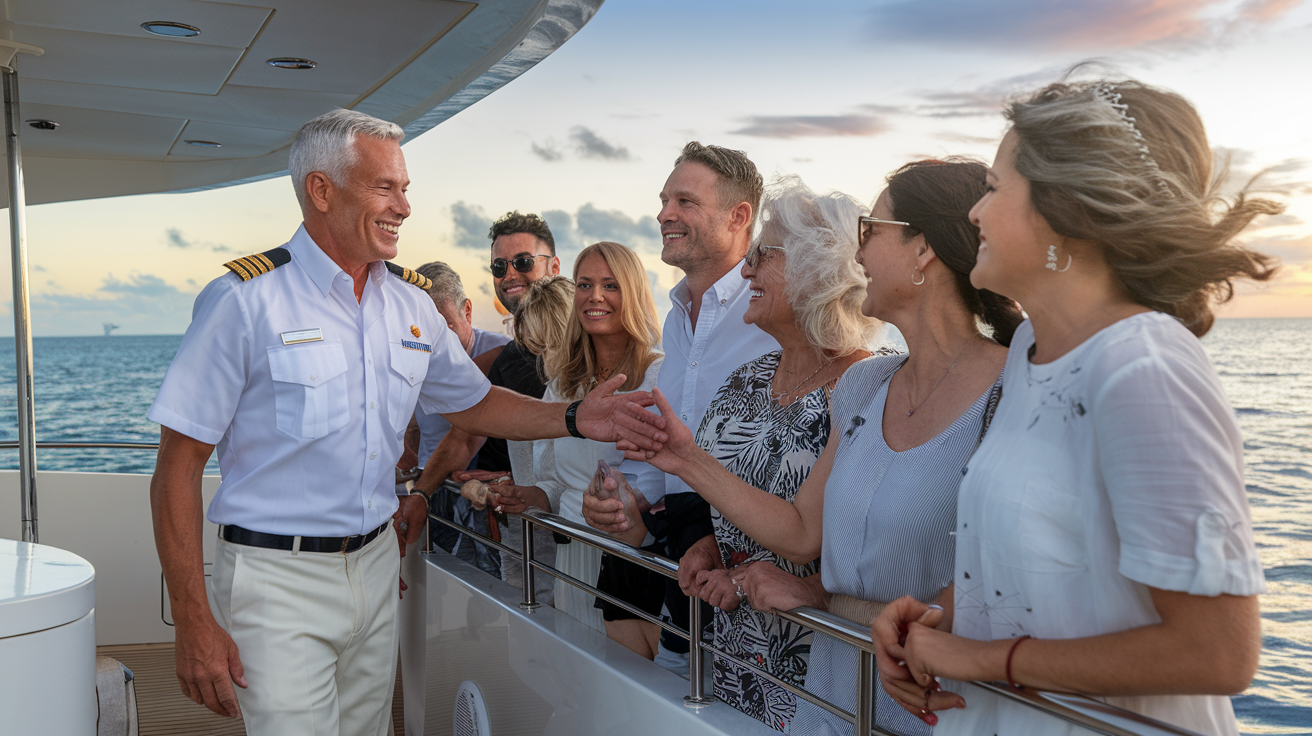
Prioritizing client satisfaction
When it comes to yacht delivery, client satisfaction is paramount. A top-notch yacht delivery captain understands that their role extends beyond safely navigating the vessel from point A to point B. They recognize that they are providing a service to the yacht owner or charter company, and as such, must prioritize the client’s needs and expectations throughout the journey.
To achieve this, a skilled yacht delivery captain:
- Actively listens to the client’s requirements
- Sets clear expectations from the outset
- Maintains open lines of communication
- Provides regular updates on the yacht’s progress
- Addresses any concerns promptly and professionally
By focusing on these aspects, a captain can ensure that the client feels valued and confident in their choice of delivery service.
| Client Satisfaction Factors | Captain’s Actions |
|---|---|
| Clear communication | Provide daily updates and respond promptly to inquiries |
| Attention to detail | Maintain meticulous logs and documentation |
| Flexibility | Adapt to client’s preferences when safe and feasible |
| Professionalism | Present a polished appearance and maintain a courteous demeanor |
| Expertise | Demonstrate knowledge and skill in all aspects of yacht delivery |
Maintaining professionalism
Professionalism is a cornerstone of excellent client service in yacht delivery. A captain who exudes professionalism instills confidence in their abilities and represents the yacht delivery service in the best possible light. This quality encompasses various aspects of the captain’s conduct and appearance:
- Appearance: A professional yacht delivery captain maintains a neat and tidy appearance, wearing appropriate attire that reflects the standards of the yachting industry.
- Communication: Clear, concise, and respectful communication is essential. This includes both verbal and written communication with the client, crew members, and any other stakeholders involved in the delivery process.
- Punctuality: A professional captain understands the value of time and adheres to agreed-upon schedules and deadlines.
- Ethical conduct: Upholding high ethical standards, including honesty, integrity, and discretion, is crucial for maintaining a professional reputation.
- Continuous learning: Staying up-to-date with industry trends, regulations, and best practices demonstrates a commitment to professionalism and excellence.
By consistently demonstrating these professional qualities, a yacht delivery captain can build trust with clients and establish a positive reputation within the industry.
Balancing safety with client requests
One of the most challenging aspects of client service orientation for a yacht delivery captain is striking the right balance between fulfilling client requests and maintaining the utmost safety standards. While it’s essential to prioritize client satisfaction, a skilled captain must never compromise on safety to accommodate client wishes.
Here are some strategies that top yacht delivery captains employ to achieve this balance:
- Clear communication of safety protocols
- Educating clients on potential risks and regulations
- Offering safe alternatives to potentially dangerous requests
- Firmly but respectfully declining unsafe requests
- Explaining the reasoning behind safety-related decisions
Let’s examine a comparison of different approaches to handling client requests:
| Client Request | Unsafe Approach | Safe and Professional Approach |
|---|---|---|
| Faster travel time | Pushing the yacht beyond safe speeds | Explaining speed limitations and optimizing route |
| Navigating through rough weather | Proceeding despite dangerous conditions | Suggesting a safer alternative route or temporary delay |
| Overloading the yacht | Accepting excessive cargo or passengers | Politely refusing and explaining weight restrictions |
| Ignoring maintenance issues | Continuing the journey with known problems | Addressing issues promptly, even if it causes delays |
By consistently prioritizing safety while still striving to meet client needs, a yacht delivery captain demonstrates both professionalism and a genuine concern for the client’s best interests.
Creating a positive atmosphere onboard
A truly exceptional yacht delivery captain understands that creating a positive atmosphere onboard is crucial for client satisfaction. This aspect of client service goes beyond mere professionalism and safety – it’s about making the delivery experience enjoyable and memorable for all involved.
To create a positive atmosphere, a skilled captain:
- Fosters a team spirit among the crew
- Maintains a calm and confident demeanor, even in challenging situations
- Encourages open communication and mutual respect
- Anticipates and addresses potential issues before they escalate
- Celebrates milestones and achievements during the journey
Here are some specific strategies that contribute to a positive onboard atmosphere:
- Lead by example: A captain who demonstrates enthusiasm, dedication, and a positive attitude sets the tone for the entire crew.
- Conflict resolution: Quickly and fairly addressing any conflicts that arise among crew members or with clients helps maintain harmony onboard.
- Cultural sensitivity: Being aware of and respecting cultural differences among crew members and clients contributes to a inclusive and welcoming environment.
- Stress management: Implementing techniques to manage stress and promote relaxation can help everyone onboard stay calm and focused.
- Celebrating diversity: Recognizing and appreciating the diverse skills and backgrounds of crew members can foster a sense of unity and mutual respect.
By focusing on these aspects, a yacht delivery captain can create an environment where clients and crew members feel valued, respected, and engaged throughout the journey.
Now that we’ve explored the importance of client service orientation in yacht delivery, it’s clear that this quality is essential for any top-tier captain. A captain who excels in this area not only ensures a safe and efficient delivery but also provides an exceptional experience that clients will remember and appreciate. This client-focused approach can lead to repeat business, positive referrals, and a stellar reputation in the competitive world of yacht delivery services.
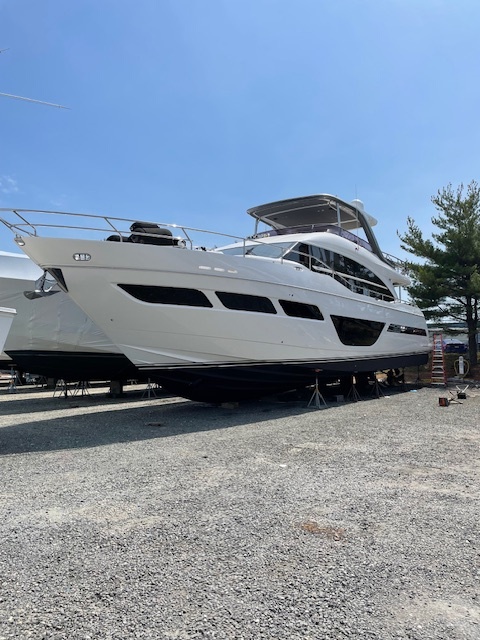
Choosing the right yacht delivery captain is crucial for ensuring a safe and successful journey. From extensive experience and expert navigation skills to a safety-first mindset and mechanical aptitude, these top qualities form the foundation of a reliable captain. However, it’s the unexpected traits like culinary skills and physical fitness that truly set exceptional captains apart.
Remember, the best yacht delivery captains possess a unique blend of technical expertise, interpersonal skills, and adaptability. When selecting a captain for your next delivery, consider all ten qualities to ensure you’re entrusting your vessel to a true professional who can handle any challenge the open seas may present. By prioritizing these attributes, you’ll not only guarantee a smooth voyage but also gain peace of mind knowing your yacht is in capable hands.
If you’re planning a yachting trip and want a professional captain to handle the details, we’re here to help. Contact Adam today to hire an experienced freelance yacht captain and make your adventure smooth and stress-free.


